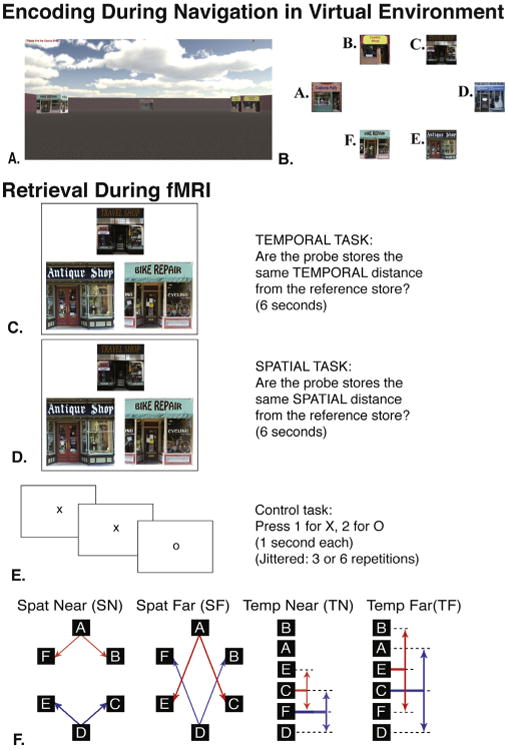Fig. 1.

Encoding and retrieval. (A) An example view of what subjects might see during encoding within the virtual reality environment. (B) Overhead map of the virtual environment. (C and D) An example retrieval triad for temporal trials (C) and spatial trials (D). Subjects were shown the same triads of storefronts in both spatial and temporal blocks, but were given separate instructions before starting each run. The reference store is always the top store while source stores are the two bottom stores. Note, that the reference store is not the same spatial distance from each source store, but is the same temporal interval from each source store. (E) A control task was intermixed with encoding and was jittered to last 3 or 6 s. Subjects made responses to random sequences of X's and O's. (F) Trials of interest were binned into 2 distance/interval categories within both spatial and temporal blocks. Visual representations of the involved trials are shown with the red and blue arrows. Lettered store identifiers demonstrate the lack of correlation between spatial layout (left side) and delivery order (right side). (For interpretation of the references to color in this figure legend, the reader is referred to the web version of this article.)
